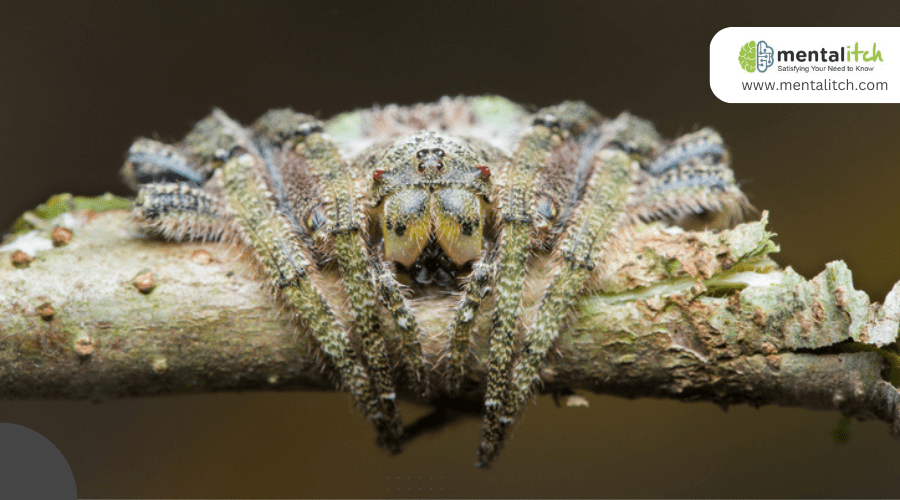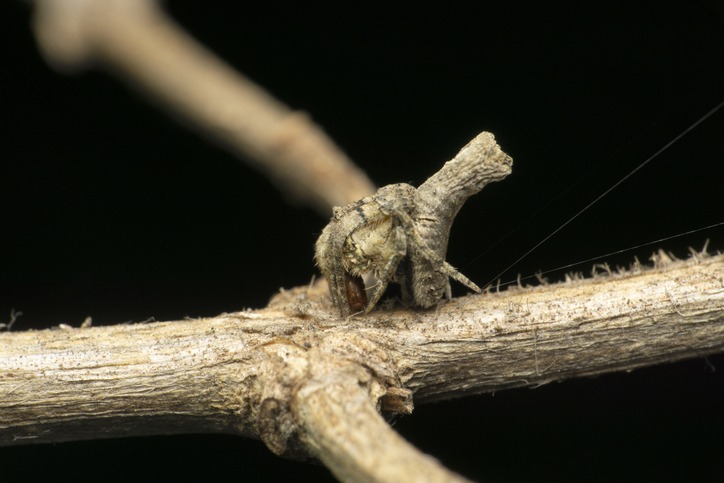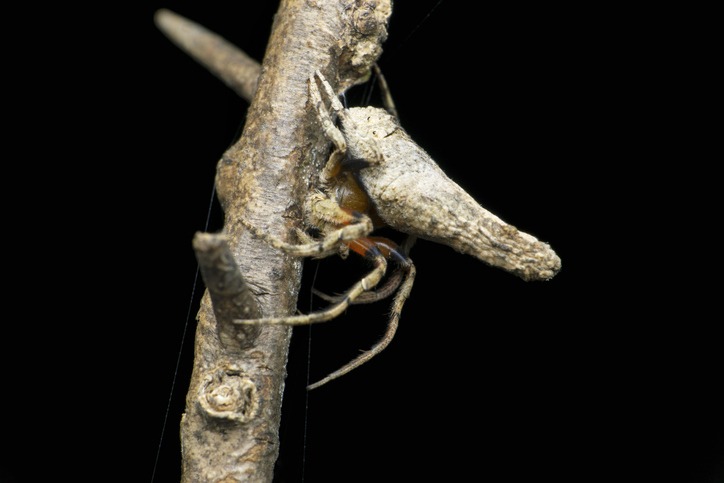Nearly 80% of arthropods rely on some form of camouflage for survival, but few do it as effectively as the Tree Stump Orb Weaver. You’ll find this spider’s ability to blend into its environment fascinating, especially how its coloration and body shape mimic a tree stump to near perfection. By adopting this strategy, it not only evades predators but also becomes a lethal hunter itself. What’s more intriguing is how these adaptations contribute to its ecological role.
Let’s explore further how this spider’s unique camouflage techniques exemplify nature’s ingenuity in adaptation and survival, inviting a closer look into its world.
Mastering Camouflage
The Tree Stump Orb Weaver often masters the art of camouflage by mimicking its surrounding environment, effectively blending into tree stumps to elude predators and prey alike. This isn’t just a matter of looking a bit like bark or having the right color; it’s an intricate adaptation that involves the entire body of the orb weaver. By adopting the appearance of a tree stump, it gains a significant advantage, both in avoiding predators and in ambushing prey. This survival strategy is a reflection of the remarkable ways in which nature evolves for species to thrive.
Its ability to remain hidden and undetected is a critical aspect of its survival and hunting success. The environment mimicry it practices isn’t just a simple trick; it’s a complex survival strategy that’s been honed over generations. The orb weaver’s effective camouflage is so detailed that it can be almost impossible to spot against the backdrop of its natural habitat. This adaptation for predator avoidance showcases the remarkable lengths to which the Tree Stump Orbweaver will go to secure its survival, making it one of nature’s most fascinating examples of effective camouflage.
Coloration and Patterns
Mastering its environment, the Tree Stump Orb Weaver adopts brown and beige hues, along with intricate patterns, to mimic the bark of tree stumps perfectly. This spider’s camouflage is not just about the colors it sports; it’s about how those colors and patterns work together to create an illusion. With its body featuring textures that closely resemble that of tree bark, it becomes almost invisible in its chosen habitat.
You’ll find that the effectiveness of this camouflage isn’t just in being the right color. The Tree Stump Orb Weaver has mastered the art of blending in by staying motionless, making it even harder for both predators and prey to spot it against the backdrop of tree stumps. This isn’t just about hiding; it’s a strategic move for survival. By seamlessly integrating into its environment, it can ambush unsuspecting prey and evade predators with ease.
Physical Adaptations
Beyond its clever coloration, the Tree Stump Orb Weaver boasts physical adaptations that greatly enhance its ability to blend into its environment. Its body shape and markings are not just for show; they’re a masterclass in the art of camouflage, mimicking the texture and patterns of tree stumps to a tee. This mimicry isn’t just about looking the part; it’s a critical adaptation for survival, making it nearly invisible to predators lurking around.
Here’s a closer look at how this remarkable spider uses its physical traits to stay under the radar:
| Adaptation | Purpose |
|---|---|
| Body Shape | Mimics the irregular form of tree stumps, enhancing camouflage. |
| Markings | Resemble decaying wood patterns, aiding in blending in. |
| Motionlessness | Stays still during the day, appearing as part of the natural landscape. |
| Color Variation | Can slightly change color to match its surroundings better. |
| Environment Use | Utilizes surrounding debris for better concealment against predators. |
Habitat Preferences
In choosing habitats laden with decaying tree stumps or wood, the Tree Stump Orb Weaver greatly enhances its camouflage capabilities. This spider’s preference for wooded areas isn’t just about finding a cozy spot; it’s a strategic choice for survival. By blending so well with its surroundings, the Tree Stump Orb Weaver sets itself up for success in both avoiding predators and capturing prey.
Here’s why the Tree Stump Orb Weaver’s habitat preferences matter:
- Camouflage Mastery: In wooded areas, this spider becomes nearly invisible, thanks to its habitat.
- Predator Evasion: The better the blend, the harder it is for predators to spot it.
- Efficient Hunting: Prey often don’t see the spider until it’s too late.
- Survival Strategies: Mimicking its environment is key to its survival.
- Habitat Choice: Decaying wood and tree stumps provide the perfect backdrop for this spider’s camouflage.
Evading Predators
The Tree Stump Orb Weaver’s remarkable camouflage not only makes it nearly invisible in its preferred wooded habitats but also plays an essential role in evading predators. By camouflaging itself to resemble a tree stump, this ingenious spider masters the art of blending into its environment. This natural disguise minimizes the risk of detection from predators like birds, lizards, and even other spiders, enhancing its survival chances.
When you look closer, the Tree Stump Orb Weaver’s body color and texture mimic the bark of a tree stump so well that it becomes a challenge to distinguish the spider from its surroundings. This mimicry is more than just a visual trick; it’s a survival strategy. It allows the orb weaver to remain undetected, not just from threats but also aids in its hunting and reproduction activities by staying invisible to both prey and potential mates.
Conclusion
As you’ve seen, the Tree Stump Orb Weaver is a master of disguise, blending seamlessly into its surroundings with its unique coloration and patterns that mimic a tree stump. Its physical adaptations and choice of habitat allow it to evade predators effectively, ensuring its survival. By spinning intricate webs on decaying tree stumps, it not only camouflages itself but also plays a crucial role in controlling insect populations, highlighting its ecological importance. Truly, this spider’s survival tactics are as fascinating as they are effective.


